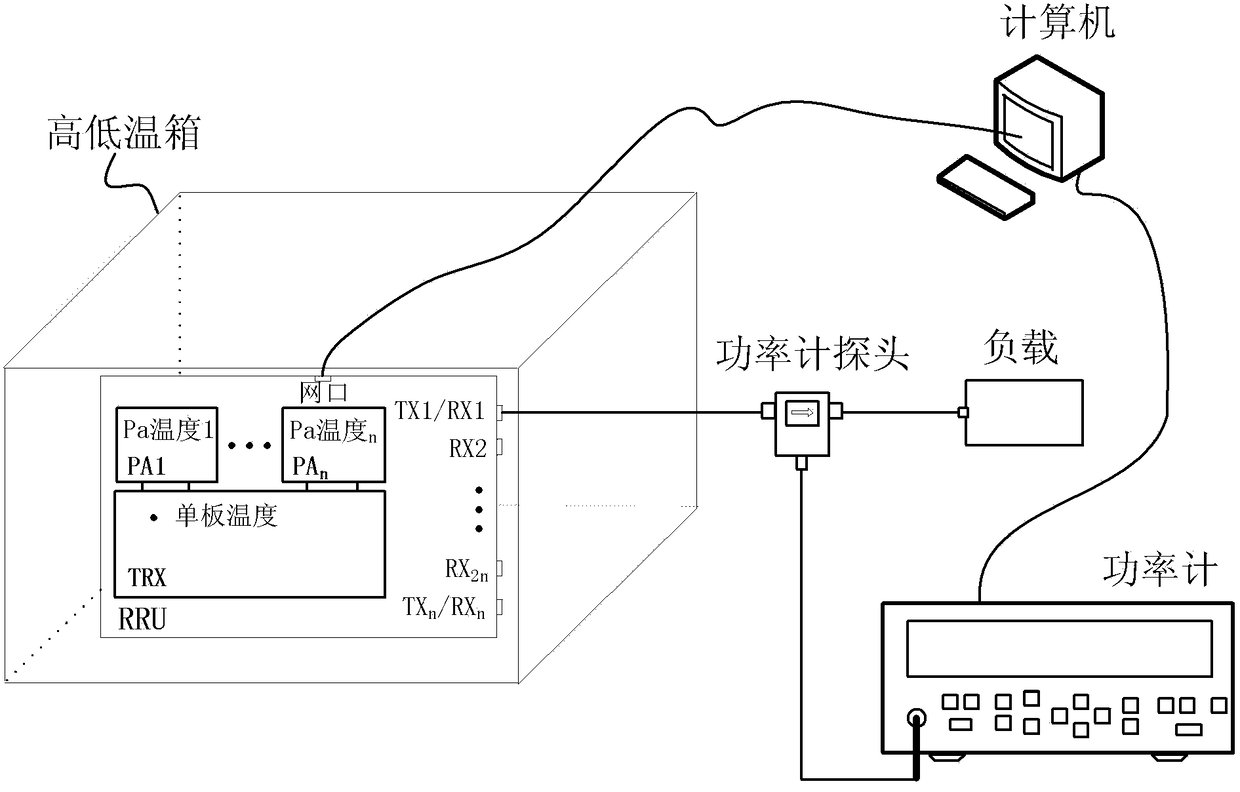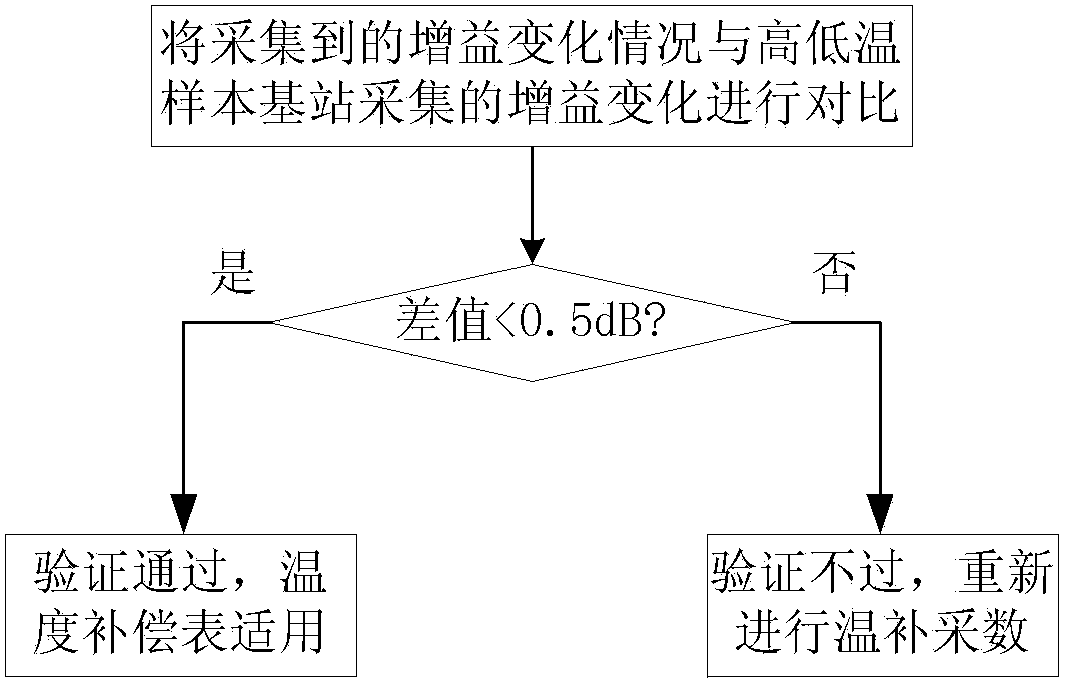A base station gain temperature compensation, calibration and verification method and compensation device
A temperature compensation and base station technology, applied in electrical components, wireless communication, power management, etc., can solve problems such as changes in the gain and temperature characteristics of radio frequency devices, improve temperature compensation accuracy, avoid compensation deviation, and achieve good results
- Summary
- Abstract
- Description
- Claims
- Application Information
AI Technical Summary
Problems solved by technology
Method used
Image
Examples
Embodiment 1
[0041] This embodiment introduces a method for verifying the gain temperature characteristics of a base station, so as to solve the problem that the change in the gain temperature characteristics of radio frequency devices in each module of the base station cannot be found in the traditional technology. The temperature compensation value generally uses the data acquired by a small number of sample base stations as the compensation data of all base stations of the same type. However, as the production continues, changes in the batches of radio frequency components in the base station will cause changes in the overall gain temperature characteristics of the base station. In order to detect this change in time and deal with it, this embodiment uses the high-temperature aging environment of the base station to collect The uplink and downlink power detection values obtain the temperature characteristics of the base station from normal temperature to high temperature range, and com...
Embodiment 2
[0054] This embodiment introduces a method for calibrating the gain temperature of the base station, such as Figure 4 As shown, including steps 210-230:
[0055] Step 210, obtaining the gain temperature change relationship corresponding to different areas of the sample base station in the high and low temperature environment;
[0056] Taking the multi-transmission and multi-reception base station as an example, the TRX (receiver board) and multiple PAs (power amplifiers) of the multi-transmission and multi-reception base station, such as Figure 5 As shown, the temperature of each region is different (the temperature difference near the PA is relatively large), and the corresponding gain temperature characteristics are also different. For example, for a 2T2R (two transmit and two receive) base station, there is one TRX (or two) and two PAs (referred to as PA1 and PA2). The temperature characteristics of the device gain within the device will also have a large difference. T...
Embodiment 3
[0078] This embodiment introduces a gain temperature compensation method of a base station, such as Figure 10 As shown, including steps 310-340:
[0079] Step 310, call the gain temperature compensation table corresponding to each area according to the current working temperature in different areas of the base station, and obtain the initial gain temperature compensation value corresponding to each area;
[0080] Step 320, call the gain temperature compensation table corresponding to each area according to the reference temperature of each area of the base station corresponding to the current frequency point, and obtain the reference gain temperature compensation value corresponding to each area;
[0081] Step 330, calculating the difference between the initial gain temperature compensation value of each area of the base station and the reference gain temperature compensation value of the area, as the gain temperature compensation value of each area;
[0082] Step 340: A...
PUM
 Login to View More
Login to View More Abstract
Description
Claims
Application Information
 Login to View More
Login to View More - R&D
- Intellectual Property
- Life Sciences
- Materials
- Tech Scout
- Unparalleled Data Quality
- Higher Quality Content
- 60% Fewer Hallucinations
Browse by: Latest US Patents, China's latest patents, Technical Efficacy Thesaurus, Application Domain, Technology Topic, Popular Technical Reports.
© 2025 PatSnap. All rights reserved.Legal|Privacy policy|Modern Slavery Act Transparency Statement|Sitemap|About US| Contact US: help@patsnap.com



